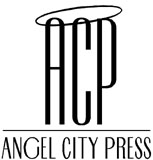 Every September, the Los Angeles County Fair in Pomona gives thousands of Angelenos the opportunity to dig into the region’s agricultural roots. Children chase young farm animals, grind cornmeal into chicken feed, and cheer during the popular pig races. These activities harken back to a time when Los Angeles was once the largest farming county in the United States.
Every September, the Los Angeles County Fair in Pomona gives thousands of Angelenos the opportunity to dig into the region’s agricultural roots. Children chase young farm animals, grind cornmeal into chicken feed, and cheer during the popular pig races. These activities harken back to a time when Los Angeles was once the largest farming county in the United States.
Judith Gerber and Rachel Surls detail Los Angeles’ agricultural roots in their new book From Cows to Concrete: The Rise and Fall of Farming in Los Angeles. And according to Gerber, the Los Angeles County Fair played a significant role in the agricultural industry in Los Angeles:
With citrus orchards spread throughout the Pomona Valley, the fair’s citrus displays were always a crowd pleaser. David Boule, author of The Orange and the Dream of California explained:
The Pomona Valley was part of the California’s extensive Orange Belt, which stretched along the base of the San Gabriel and San Bernardino Mountains. Once irrigation brought water to this area, it became the center of the Golden State’s citrus industry, especially known for the growing the large, juicy and delicious Washington navel.
 |
 |
At the 1929 fair, six different citrus companies worked together to create a mosaic mural made of citrus fruits, which the Los Angeles Times called “the most beautiful in design ever placed in a Southern California fair.” The following year, a Venetian temple of citrus “with softly-colored lights steaming through arched windows of leaded glass” was the highlight. In 1930, the Times reported, “to the citrus grower, the [Los Angeles County] fair is a clearing-house for an endless amount of information.”
The Los Angeles County Fair continues to offer an endless amount of agricultural information from its extensive livestock displays to the large produce garden growing inside the fairgrounds. ACP books From Cows to Concrete: The Rise and Fall of Farming History and The Orange and the Dream of California deepen this introduction to Los Angeles’ agricultural history.
The authors of both books will be signing their books in the next two months (see the Angel City Press calendar for more details).
[17-Sep-2016]
